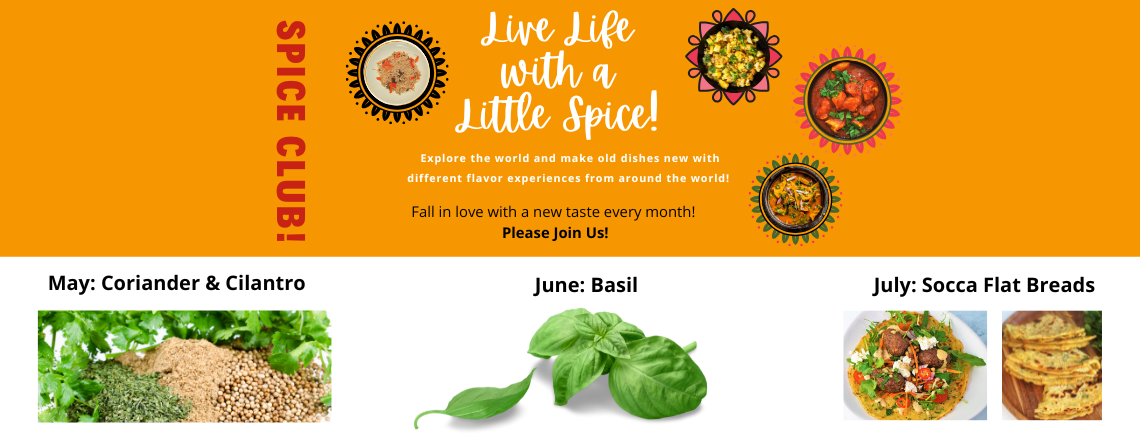Do you love to cook? Do you like to try new flavors and recipes? Or maybe you are in a cooking rut and don’t know how to start expanding your cooking repertoire. Join the Spice Club and take your cooking to the next level with featured spices and recipes to infuse excitement and flavor into every style of meal!
The Loomis Library Spice Club hosts monthly meetings to enhance our understanding and appreciation of different cultures through the lens of spices. Each month we explore a different region, a featured spice blend, ancient grains, and more! We will provide vegetarian recipes highlighting the featured regional cuisine and sample the recipes provided.
How it works:
Each month the library will provide a spice kit curriculum package that can be picked up at the monthly meetings or during normal business hours after the meeting date. Preregister for one or all workshops!
Each kit will include:
- Information and history of a featured spice, spice blend, ancient grains, and more!. We will explore regional cuisine and cultures, and botanical information of the featured spice.
- Two or more recipes featuring the spice or spice blend.
- Pre-measured samples of the spice, spice blend, or ancient grain, for the recipes*
* while supplies last
We will meet in person on the scheduled dates (see below) for an informal meeting, and sample the featured recipes.
May 27th, 2025 from 6:00 p.m. – 6:45 p.m.
Spice: Coriander and Cilantro
Registration is limited to 30.
Coriander and cilantro come from the same plant but have very different flavors and textures. Cilantro (the leaves) has a fresh, citrusy taste, while coriander (the seeds) is warm, spicy, and slightly sweet. This member of the carrot or parsley family (Apiaceae) is native to southern Europe and Asia but has spread to many other parts of the world. One of the oldest know herbs, it was grown in ancient Egyptian gardens and its seeds have been found in Egyptian tombs.
June 24th, 2025 from 6:00 p.m. – 6:45 p.m.
Spice: Basil
Registration is limited to 30.
Basil is a symbol of love in Italy. It’s said that a man with a sprig of basil in his hair announced his intentions to wed his love, and she announced her willingness with a pot of basil on her balcony.
June is the perfect month to revisit this versatile herb. Nothing says summer better than a bunch of garden-fresh basil. We will revisit this versatile herb and explore new recipes!
July 22nd, 2025 from 6:00 p.m. – 6:45 p.m.
Spice: Socca: Chickpea Flour Flatbread
Registration is limited to 30.
Socca, a pancake that originates from Nice and the neighbouring Italian coastline, is quick to cook, cheap to eat, gluten-free, and incredibly satisfying.
The legend of its creation is an entertaining tale. One story goes that the Roman forces once stationed in the area that is now modern-day Nice, would light a fire under their shields and use the platform as a griddle top to fry their hasty mix of chickpea flour and water.
We will look at the history of this versatile bread and sample the many delicious ways that it can be served!

